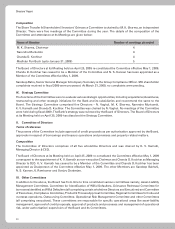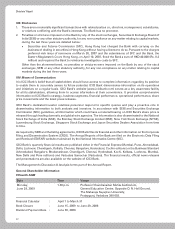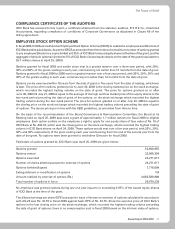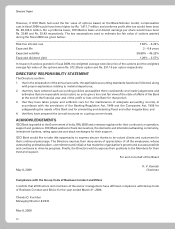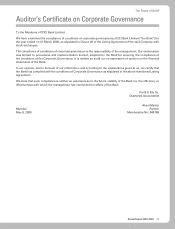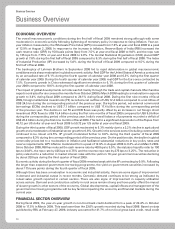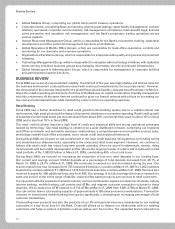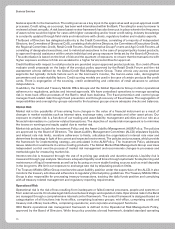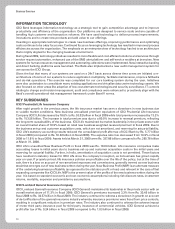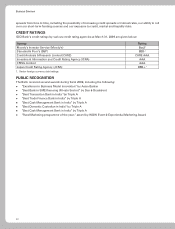ICICI Bank 2009 Annual Report Download - page 32
Download and view the complete annual report
Please find page 32 of the 2009 ICICI Bank annual report below. You can navigate through the pages in the report by either clicking on the pages listed below, or by using the keyword search tool below to find specific information within the annual report.
30
Business Overview
Business Overview
ECONOMIC OVERVIEW
The overall macroeconomic conditions during the first half of fiscal 2009 remained strong although with some
moderation in economic activity following tightening of monetary policy in response to rising inflation. Year-on-
year inflation measured by the Wholesale Price Index (WPI) increased from 7.8% at year-end fiscal 2008 to a peak
of 12.9% at August 2, 2008. In response to the increase in inflation, Reserve Bank of India (RBI) increased the
cash reserve ratio (CRR) by 150 basis points (bps) from 7.5% at year-end fiscal 2008 to 9.0% and the repo rate
by 125 bps from 7.75% at year-end fiscal 2008 to 9.0%. The Central Statistical Organisation (CSO) placed GDP
growth at 7.8% during the first half of fiscal 2009 compared to 9.3% during the first half of fiscal 2008. The Index
of Industrial Production (IIP) increased by 5.0% during the first half of fiscal 2009 compared to 9.5% during the
first half of fiscal 2008.
The bankruptcy of Lehman Brothers in September 2008 led to rapid deterioration in global macroeconomic
conditions and a sharp moderation in global economic activity. Real GDP for the United States of America contracted
by an annualised rate of 6.1% during the fourth quarter of calendar year 2008 and 6.3% during the first quarter
of calendar year 2009. During the fourth quarter of calendar year 2008, real GDP for the Euro area contracted by
1.5%. Economic growth in China witnessed significant moderation to 6.1% during the first quarter of calendar
year 2009 compared to 10.6% during the first quarter of calendar year 2008.
The impact of global developments on India was felt mainly through the trade and capital channels. Merchandise
exports contracted for six consecutive months from October 2008 to March 2009 leading to a moderation in exports
growth to 3.4% during fiscal 2009 compared to 29.1% during fiscal 2008. During the first nine months of fiscal
2009, foreign institutional investments (FII) recorded a net outflow of US$ 12.4 billion compared to a net inflow of
US$ 24.5 bn during the corresponding period of the previous year. During this period, net external commercial
borrowings (ECBs) declined to US$ 7.1 billion compared to US$ 17.4 billion during the corresponding period
of the previous year. The decline in net FII and ECB flows was partly offset by an increase in net foreign direct
investment (FDI) flows to US$ 15.4 billion during the first nine months of fiscal 2009 compared to US$ 6.9 billion
during the corresponding period of the previous year. India’s overall balance of payments recorded a deficit of
US$ 20.4 billion during the first nine months of fiscal 2009. This led to a significant depreciation of the Rupee from
40.12 per US dollar at year-end fiscal 2008 to 50.72 per US dollar at year-end fiscal 2009.
During the third quarter of fiscal 2009, GDP growth moderated to 5.3% mainly due to a 2.2% decline in agricultural
growth and a moderation of industrial sector growth to 0.8%. Growth in the services sector (including construction)
continued to be robust at 9.5%. IIP growth moderated further to 0.8% during the third quarter of fiscal 2009
compared to 8.3% during the corresponding period of the previous year. On the positive side, the decline in global
commodity prices led to a moderation in inflation and facilitated substantial reductions in key policy rates and
reserve requirements. WPI inflation moderated from a peak of 12.9% in August 2008 to 0.3% at end-March 2009.
Since October 2008, RBI has reduced the cash reserve ratio by 400 bps to 5.0%, the statutory liquidity ratio by 100
bps to 24.0%, the repo rate by 425 bps to 4.75% and the reverse repo rate by 275 bps to 3.25%. The reduction in
policy rates led to a reduction in market interest rates with the yield on 10-year government securities declining
by about 320 bps during the third quarter of fiscal 2009.
Economic activity during the fourth quarter of fiscal 2009 remained weak with the IIP contracting by 0.9%. Following
the larger than expected government borrowing programme, the yield on government securities increased by
about 175 basis points during the fourth quarter of fiscal 2009.
Although there has been a moderation in economic and industrial activity, there are some signs of improvement
in demand and industrial output in recent months. Domestic demand continues to be strong as indicated by
robust sales growth reported in certain sectors. There are also signs of improvement in capacity utilisation
across sectors. Demand and construction activity in rural areas remain strong and have partly offset the impact
of slower growth in other sectors of the economy. Global developments, capital inflows and management of the
government borrowing programme will be key factors impacting the economy and financial markets during the
current year.
FINANCIAL SECTOR OVERVIEW
During fiscal 2009, the year-on-year growth in non-food bank credit declined from a peak of 29.4% in October
2008 to 17.5% in March 2009. This was lower than the 23.0% growth recorded during fiscal 2008. Based on data
published by RBI, at February 27, 2009, industry accounted for 41.7% of non-food gross bank credit, retail credit


